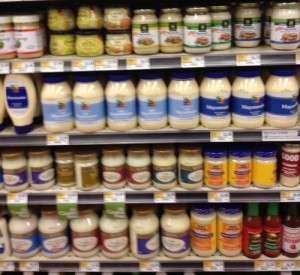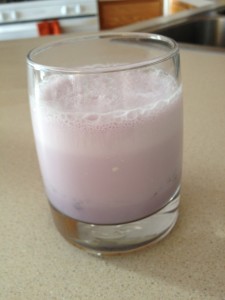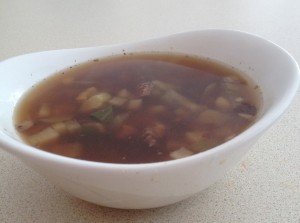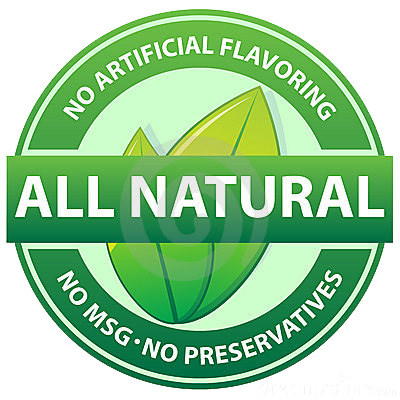
Seriously you should buy this book
I’m an idiot. Seriously. If I could I’d slap myself. Since that isn’t really possible (I’d duck), I’m posting this as a public mea culpa.
Three weeks of drinking nothing but raw milk (3 1/2 quarts to a gallon a day) and watching the changes that came over my body was a revelation to me. I lost over 5 pounds in 3 weeks while hardly exercising and mostly resting. When I started the cure, I weighed 201.4 pounds, about 1 1/2 pounds more than I did 3 months earlier when I was eating little and trying to exercise (despite a sprained ankle). Yes I had lost some inches, but I wasn’t losing weight.
So I had to look hard at what I have been doing and what I need to be doing and I came to some conclusions:
- Trying to get 8-9 hours of exercise in a week to try to burn 3,500 calories a week was not resulting in my losing a pound a week.
- I was also following a calorie restriction diet of eating a maximum of 1,700 calories a day from my food (and mostly I was averaging 1,300 – 1,500), and even limiting my calories wasn’t resulting in the pound a week that the app I was using (LoseIt) said I would lose based on its recommendations.
So tracking Calories In/Calories Out wasn’t really working for me and for me to go back to that if I want to lose the 60 extra pounds I’ve gained in the last 10 years is pretty much insanity defined. Keep in mind that this isn’t just about weight loss, this is about being healthy as well. I get that many people aren’t defined by their weight. I’m not either, but I also hate how my clothes don’t fit anymore or how I have a hard time doing physical things that used to be easy. (7-10 mile hikes)
During this week, I read Gary Taubes’ book “Why We Get Fat”. I’ve owned his book “Good Calories, Bad Calories” since it was published, but because I keep lending it to people, its spent more time out of my house then inside it and I haven’t had the opportunity to re-read it for a while. “Why We Get Fat” is a more easily read and understood distillation of Good Calories, Bad Calories and reading it was a wake up call to what I have known and for some reason discarded.
Why did I discard knowledge that I knew worked? Mainly because I didn’t keep reinforcing what I knew. I (like all of us) kept being bombarded by the media and government reports talking about calories in/ calories out (calorie restriction) as the sole way to lose weight. I also for some reason, once I was diagnosed as gluten intolerant, decided that while gluten was off-limits, other grains weren’t and I would eat them. It didn’t help that the app I was using on my smart phone emphasised calorie limits.
According to Taube’s book there are two competing theories of how we should lose weight. One, the Theory of Thermodynamics in Weight Loss, is the one we’ve heard over and over again. The other one, which Taubes coined, is Adiposity (The quality or state of being fat: Obesity) 101.
The Theory of Thermodynamics says that choosing to be fat or not is all a matter of our will-power. If we want to lose weight, it’s a simple matter of cutting down on our eating and exercising more. It tells us that meat and animal fat is bad for us and that we should emphasis whole grains. The results of this have been an emphasis on carbohydrates and portion control. Other results since this theory has been promulgated as the “TRUTH” include a surge in obesity, diabetes and heart disease. All of this despite the fact that we did what we were told. We reduced animal fats and increased our reliance on carbohydrates. Coincidence? In other words, it’s all on us to do this. We should be eating processed food that is labeled “heart healthy”, i.e. has a lot of whole grains and after that it’s just a matter of how much food we actually eat. If we do this to try losing weight and can’t, it must be because we don’t have enough will-power. And if we don’t have the “will-power” to play this game, its our problem, not the health industries.
Adiposity 101 says that the types of foods we eat and the hormones that we create thereof, is the reason we gain weight. When we are over-weight and eat a lot, it’s because the foods we eat are immediately turned into fat deposits by the insulin (in conjunction with other hormones) in our system. Since the fat deposits come first, we are hungry because the food we ate was immediately turned into fat rather than being used as energy for our bodies. The foods that were at fault? Carbohydrates. Sugars, grains and starches. Not only does cutting out carbohydrates reduce weight, but it reduces triglycerides and LDL while raising HDL and promotes fat burning, not storage. This is proven, just not shouted out the doors.
There’s a lot more to both of them than my short synopsis, and both are covered extensively in the books, but for now that suffices.
I’ve tried the Theory of Thermodynamics weight loss and (like many of the studies) it didn’t work. I’m going back to the Adiposity 101 instead. (also known as a low carb diet). Twelve years ago, I went through the Atkins diet and lost 50 pounds in 8 months. I basically lost 5 pounds a month, slowly and steadily.
I’m going to follow Atkins again (since it worked the last time) and start with an induction period of 2 – 3 weeks of very low carb (20 grams of carbohydrates) or less per day. My first few weeks will be meat, eggs, butter, lard, some yogurt and some vegetables, (chard, kale, some asparagus and artichokes), After that I’ll start adding non starchy vegetables in a little at a time as well as kefir until I figure out the point where I stop losing weight at which time I’ll back off on the carbs slightly. If I recall, the way I lost weight before was staying at or below 40 grams of carbohydrates a day. Last time, there wasn’t as much research available (thanks to Taubes who provided it).
For those of you who think this is unhealthy, I challenge you to read the book, “Why We Get Fat” if you want the readable summary and “Good Calories, Bad Calories” if you want the very dense, full of information book. They both say the same thing, so unless you are in the medical profession (in which case I would urge you to read both), consider “Why We Get Fat“.
I’m not going to give up on my raw milk though. I’ve thought long and hard as to why, when I was ingesting a load of carbohydrates in the form of raw milk sugars (between 164 and 192 grams a day depending on how many cups of milk I had), that I lost weight. It could have been water weight, but I don’t think so. I’m pretty convinced that the entire time I was doing the calories in/calories out fiasco, got rid of the water weight. I will concede that the first 3 pounds of the milk cure could and most probably was water weight. But I think that either the sugars in raw milk work differently in our bodies (note that while my blood glucose went up, it didn’t go up remarkably so) or that other properties in the milk compensate for that. I’m going to try an experiment since I don’t want to give it up completely. I want to see how a regular low carbohydrate diet works with the incorporation of fermented milk products that I make from my raw milk (yogurt, keifir and cheese). If I continue to lose weight on that, then I’ll re-introduce raw milk in slowly and see what happens when I do so. I’ll report on that in a month or two in my fitness reports.
I’m also going to continue my food preservation with an emphasis on lacto fermented foods and other items that I can do with either less or no sugar.
I’m not going to give up on exercise either since I think weight-bearing exercise is still important. But I’m going to cut it way down. 30-40 minutes on strength training a few times a week. If I want a walk, I’ll go for one, if I feel ready to use my Nordic Trac I will. Same with yoga, but I will not be spending 8-9 hours a week on exercise.
Oh and I deleted Lose it! from my phone. Instead I bought Carb Master which will track my carbohydrates and not my calories. Having the carbohydrates I consume front and center rather than the calories will keep me focused on what is important.
I feel really stupid for forgetting all that I knew to be true and letting other people’s opinion and media coverage over-ride my reality. While I’ve gained all the weight back from the last time I did Atkins, it’s because I didn’t do what I needed to do. Definitely time for a reset.
Anyone have an etch-a-sketch I can shake?
Tags: Atkins Diet, Gary Taube, Good Calories Bad Calories, Low-Carbohydrate Diet


 It’s Spring. The days are getting warmer and when that happens, my mind starts turning to food preservation. I’ve already done some, I’ve dehydrated Cremini and Portobello mushrooms. But there is more to do and much of my canning is not about single ingredients. Unfortunately, most of the orchards and farmers markets in my area don’t open up until late May, early June. So I still have a few weeks to wait.
It’s Spring. The days are getting warmer and when that happens, my mind starts turning to food preservation. I’ve already done some, I’ve dehydrated Cremini and Portobello mushrooms. But there is more to do and much of my canning is not about single ingredients. Unfortunately, most of the orchards and farmers markets in my area don’t open up until late May, early June. So I still have a few weeks to wait.

 Day after day we are bombarded with advertisements for food that tell us how healthy something is for us. We walk into a grocery store and see the front of boxes that tell us how natural something is, or how healthy. But while some words on a label actually have a governmental meaning (Organic for instance). Others don’t quite tell the entire story.
Day after day we are bombarded with advertisements for food that tell us how healthy something is for us. We walk into a grocery store and see the front of boxes that tell us how natural something is, or how healthy. But while some words on a label actually have a governmental meaning (Organic for instance). Others don’t quite tell the entire story.



